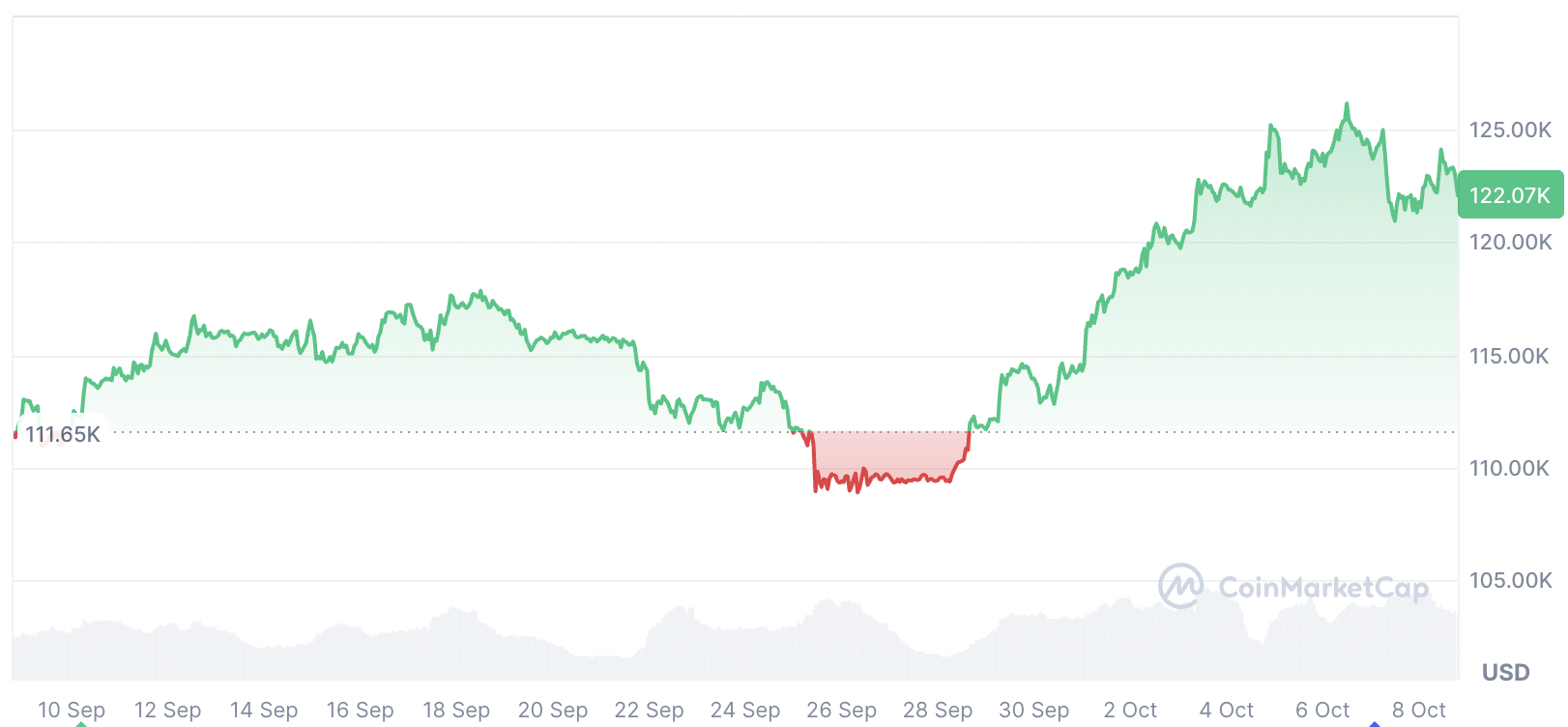Bitcoin four-year cycle is a historical pattern linking pre-halving and post-halving timing that has predicted past market highs; if the cycle holds, traders expect extended price discovery in late 2025, but deviation could trigger dramatic volatility for BTC.
-
Cycle timing matters: pre- and post-halving durations often mirror each other.
-
Veteran trader Peter Brandt highlights a potential bull-market high tied to the cycle’s symmetry.
-
Market data: Bitcoin traded above $126,100 with 30-day gains near 9.7%; some analysts model >50% chances of higher monthly closes.
Bitcoin four-year cycle explained: Is the cycle intact, and what it means for BTC price action—read analysis and expert views from COINOTAG.
What is the Bitcoin four-year cycle?
The Bitcoin four-year cycle is a historical observation tying the interval from a cycle low to a halving with an equal interval from halving to cycle high. Traders use this pattern to estimate peak windows, but the pattern is descriptive—not a guaranteed predictor.
How did Peter Brandt interpret the cycle this week?
Veteran trader Peter Brandt noted Bitcoin’s cycle low on Nov. 9, 2022, occurred 533 days before the April 20, 2024 halving. Adding 533 days to that halving places a critical window in early October 2025, which aligns with recent strong price action above prior highs.

Bitcoin is trading at $122,070 at the time of publication, up 9.74% over the past 30 days. Source: CoinMarketCap
Why could deviation from the cycle be dramatic?
Market trends that break long-observed cyclic patterns often produce outsized moves. If Bitcoin fails to respect the four-year symmetry, traders and algorithms recalibrating positions can amplify volatility.
What are other analysts saying about timing and targets?
Several analysts and market participants offer varied projections. Some models indicate a substantial chance Bitcoin could exceed $140,000 in short windows. Other voices have suggested targets ranging up to $250,000 by the end of 2025, reflecting divergent assumptions on liquidity and adoption.
When did Bitcoin hit its recent all-time high?
Bitcoin set a new all-time high above $126,100 on Monday following the crucial cycle date over the weekend. Observers point to that move as confirmation of continued price discovery, provided the advance sustains itself beyond short-term corrections.
How should traders and investors act on the cycle?
Prudent market participants combine cycle analysis with risk management: set clear position limits, monitor volatility indicators, and incorporate macro signals such as ETF flows and institutional treasury allocations. Betting solely on cycle symmetry ignores evolving market structure.
Frequently Asked Questions
Does the four-year cycle guarantee price targets?
No. The cycle provides timing context based on historical patterns but does not guarantee price levels. Structural shifts—like ETF adoption or corporate treasuries—can alter outcomes.
Can cycles change suddenly?
Yes. Cycles can evolve as market participants, products, and regulations change, which is why many analysts treat the pattern as one input among many.
Key Takeaways
- Historical symmetry: Bitcoin’s pre- and post-halving intervals have matched in past cycles, making timing windows useful for planning.
- Not infallible: Deviations from the cycle can cause dramatic volatility; combine cycle insights with risk controls.
- Data-driven approach: Use volume, open interest, and macro indicators alongside cycle projections to form balanced views.
Conclusion
The Bitcoin four-year cycle remains a meaningful reference point for traders and analysts, but it should be integrated with contemporary data and sound risk management. COINOTAG will continue monitoring on-chain metrics, institutional flows, and expert commentary to update readers as conditions evolve.
